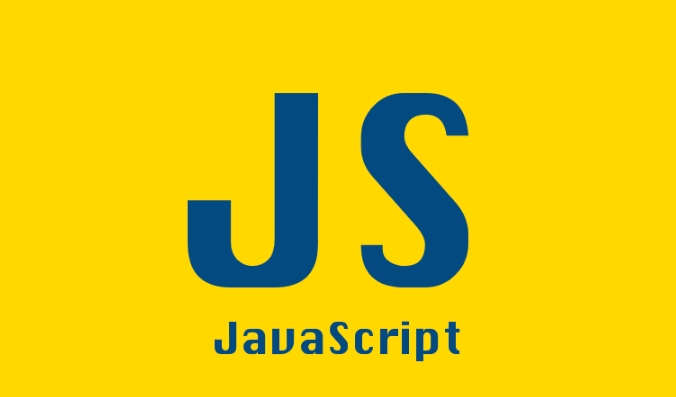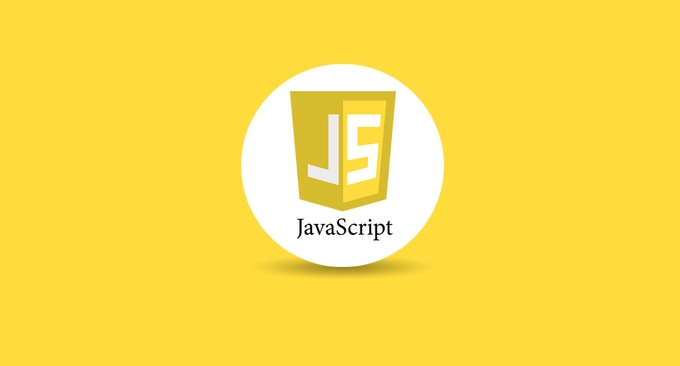Closure is a combination of a function and its lexical scope, allowing a function to access and remember its external variables. 1. Closure is composed of functions and their environment when defined, such as inner function remembers the count in outer; 2. It is often used for data encapsulation, such as createCounter to create private variables; 3. Used as a function factory, such as makeGreeting to generate greeting functions in different languages; 4. Keep the context in event callbacks, such as setTimeout to capture loop variables; 5. Pay attention to memory usage, performance impact, and avoid excessive use, and you can use class or module instead.

Closure is a powerful but often misunderstood concept in JavaScript. Simply put, closure means that a function can access and remember its lexical scope, even if the function is executed outside its scope.

This sounds a bit abstract, but in fact it often appears in our daily coding, such as event processing, module mode, data encapsulation and other scenarios. Understanding the working mechanism of closure can help you write more efficient and clearer code.

What is Closure?
Closure is not a special language feature, but the result of the combined action of a function and its environment.
For example:

function outer() {
let count = 0;
return function inner() {
count ;
console.log(count);
};
}
const counter = outer();
counter(); // Output 1
counter(); // Output 2 In this example, the inner function is a closure. It "remembered" the variable count in the scope of the outer function. Even if outer has been executed, count is still not cleared by the garbage collection mechanism.
The key point is: the lexical scope of the function = closure
Common uses of Closure
Closure has many useful things in actual development. Here are a few common usage scenarios.
Data encapsulation and private variables
JavaScript does not natively support private variables like other languages, but we can use closure to simulate privateness.
function createCounter() {
let count = 0;
return {
increment: () => count ,
getCount: () => count
};
}
const counter = createCounter();
console.log(counter.getCount()); // 0
counter.increment();
console.log(counter.getCount()); // 1
console.log(counter.count); // undefined Here count is private, and cannot be modified directly from the outside, and can only be operated through exposed methods.
Function Factory
closure can be used to create functions with specific behaviors that share certain configurations or states.
function makeGreeting(language) {
return function(name) {
if (language === 'en') {
console.log(`Hello, ${name}`);
} else if (language === 'zh') {
console.log(`Hello, ${name}`);
}
};
}
const greetEn = makeGreeting('en');
const greetZh = makeGreeting('zh');
greetEn('Alice'); // Hello, Alice
greetZh('Zhang San'); // Hello, Zhang SanThis writing makes function multiplexing more flexible.
Event callbacks and asynchronous operations
closure is very useful in event listening or asynchronous programming because it preserves context information.
for (var i = 1; i <= 3; i ) {
setTimeout(function() {
console.log(i);
}, 1000);
}
// Output three 4This is a classic problem because var has no block-level scope. If we want to output 1, 2, and 3, we can change it like this:
for (let i = 1; i <= 3; i ) {
setTimeout(function() {
console.log(i);
}, 1000);
}
// Output 1, 2, 3 This is because the variable declared by let creates a new scope for each loop, and the function inside setTimeout forms a closure, capturing the current i .
Things to note when using Closure
Although closure is powerful, there are some things to note:
- Memory footprint : closure preserves the scope chain of external functions, which can cause memory leaks, especially when referencing large objects.
- Performance Impact : Frequent creation of closures may affect performance, especially in loops or high-frequency calls.
- Avoid overuse : In some cases, you can replace closure with class or module, and the code is more readable.
If you are not sure if you need closure, you can first consider whether there is a better structured way to implement the same functionality.
Basically that's it. Closure is a phenomenon that naturally exists in JavaScript, not a complex concept. As long as you use external variables in your function, you have already used closure. Only by understanding and making good use of it can we truly exert its power.
The above is the detailed content of Understanding Javascript Closures and Their Use Cases. For more information, please follow other related articles on the PHP Chinese website!

Hot AI Tools

Undress AI Tool
Undress images for free

Undresser.AI Undress
AI-powered app for creating realistic nude photos

AI Clothes Remover
Online AI tool for removing clothes from photos.

Clothoff.io
AI clothes remover

Video Face Swap
Swap faces in any video effortlessly with our completely free AI face swap tool!

Hot Article

Hot Tools

Notepad++7.3.1
Easy-to-use and free code editor

SublimeText3 Chinese version
Chinese version, very easy to use

Zend Studio 13.0.1
Powerful PHP integrated development environment

Dreamweaver CS6
Visual web development tools

SublimeText3 Mac version
God-level code editing software (SublimeText3)
 How to make an HTTP request in Node.js?
Jul 13, 2025 am 02:18 AM
How to make an HTTP request in Node.js?
Jul 13, 2025 am 02:18 AM
There are three common ways to initiate HTTP requests in Node.js: use built-in modules, axios, and node-fetch. 1. Use the built-in http/https module without dependencies, which is suitable for basic scenarios, but requires manual processing of data stitching and error monitoring, such as using https.get() to obtain data or send POST requests through .write(); 2.axios is a third-party library based on Promise. It has concise syntax and powerful functions, supports async/await, automatic JSON conversion, interceptor, etc. It is recommended to simplify asynchronous request operations; 3.node-fetch provides a style similar to browser fetch, based on Promise and simple syntax
 JavaScript Data Types: Primitive vs Reference
Jul 13, 2025 am 02:43 AM
JavaScript Data Types: Primitive vs Reference
Jul 13, 2025 am 02:43 AM
JavaScript data types are divided into primitive types and reference types. Primitive types include string, number, boolean, null, undefined, and symbol. The values are immutable and copies are copied when assigning values, so they do not affect each other; reference types such as objects, arrays and functions store memory addresses, and variables pointing to the same object will affect each other. Typeof and instanceof can be used to determine types, but pay attention to the historical issues of typeofnull. Understanding these two types of differences can help write more stable and reliable code.
 React vs Angular vs Vue: which js framework is best?
Jul 05, 2025 am 02:24 AM
React vs Angular vs Vue: which js framework is best?
Jul 05, 2025 am 02:24 AM
Which JavaScript framework is the best choice? The answer is to choose the most suitable one according to your needs. 1.React is flexible and free, suitable for medium and large projects that require high customization and team architecture capabilities; 2. Angular provides complete solutions, suitable for enterprise-level applications and long-term maintenance; 3. Vue is easy to use, suitable for small and medium-sized projects or rapid development. In addition, whether there is an existing technology stack, team size, project life cycle and whether SSR is needed are also important factors in choosing a framework. In short, there is no absolutely the best framework, the best choice is the one that suits your needs.
 JavaScript time object, someone builds an eactexe, faster website on Google Chrome, etc.
Jul 08, 2025 pm 02:27 PM
JavaScript time object, someone builds an eactexe, faster website on Google Chrome, etc.
Jul 08, 2025 pm 02:27 PM
Hello, JavaScript developers! Welcome to this week's JavaScript news! This week we will focus on: Oracle's trademark dispute with Deno, new JavaScript time objects are supported by browsers, Google Chrome updates, and some powerful developer tools. Let's get started! Oracle's trademark dispute with Deno Oracle's attempt to register a "JavaScript" trademark has caused controversy. Ryan Dahl, the creator of Node.js and Deno, has filed a petition to cancel the trademark, and he believes that JavaScript is an open standard and should not be used by Oracle
 Handling Promises: Chaining, Error Handling, and Promise Combinators in JavaScript
Jul 08, 2025 am 02:40 AM
Handling Promises: Chaining, Error Handling, and Promise Combinators in JavaScript
Jul 08, 2025 am 02:40 AM
Promise is the core mechanism for handling asynchronous operations in JavaScript. Understanding chain calls, error handling and combiners is the key to mastering their applications. 1. The chain call returns a new Promise through .then() to realize asynchronous process concatenation. Each .then() receives the previous result and can return a value or a Promise; 2. Error handling should use .catch() to catch exceptions to avoid silent failures, and can return the default value in catch to continue the process; 3. Combinators such as Promise.all() (successfully successful only after all success), Promise.race() (the first completion is returned) and Promise.allSettled() (waiting for all completions)
 What is the cache API and how is it used with Service Workers?
Jul 08, 2025 am 02:43 AM
What is the cache API and how is it used with Service Workers?
Jul 08, 2025 am 02:43 AM
CacheAPI is a tool provided by the browser to cache network requests, which is often used in conjunction with ServiceWorker to improve website performance and offline experience. 1. It allows developers to manually store resources such as scripts, style sheets, pictures, etc.; 2. It can match cache responses according to requests; 3. It supports deleting specific caches or clearing the entire cache; 4. It can implement cache priority or network priority strategies through ServiceWorker listening to fetch events; 5. It is often used for offline support, speed up repeated access speed, preloading key resources and background update content; 6. When using it, you need to pay attention to cache version control, storage restrictions and the difference from HTTP caching mechanism.
 Leveraging Array.prototype Methods for Data Manipulation in JavaScript
Jul 06, 2025 am 02:36 AM
Leveraging Array.prototype Methods for Data Manipulation in JavaScript
Jul 06, 2025 am 02:36 AM
JavaScript array built-in methods such as .map(), .filter() and .reduce() can simplify data processing; 1) .map() is used to convert elements one to one to generate new arrays; 2) .filter() is used to filter elements by condition; 3) .reduce() is used to aggregate data as a single value; misuse should be avoided when used, resulting in side effects or performance problems.
 JS roundup: a deep dive into the JavaScript event loop
Jul 08, 2025 am 02:24 AM
JS roundup: a deep dive into the JavaScript event loop
Jul 08, 2025 am 02:24 AM
JavaScript's event loop manages asynchronous operations by coordinating call stacks, WebAPIs, and task queues. 1. The call stack executes synchronous code, and when encountering asynchronous tasks, it is handed over to WebAPI for processing; 2. After the WebAPI completes the task in the background, it puts the callback into the corresponding queue (macro task or micro task); 3. The event loop checks whether the call stack is empty. If it is empty, the callback is taken out from the queue and pushed into the call stack for execution; 4. Micro tasks (such as Promise.then) take precedence over macro tasks (such as setTimeout); 5. Understanding the event loop helps to avoid blocking the main thread and optimize the code execution order.






